|
Monday, November 7, 2011
Progress Notes
Two of our early Miller County physicians were immigrants from Germany, Dr. Anton Nixdorf and Dr. Charles Curtman (photos 01 and 02).
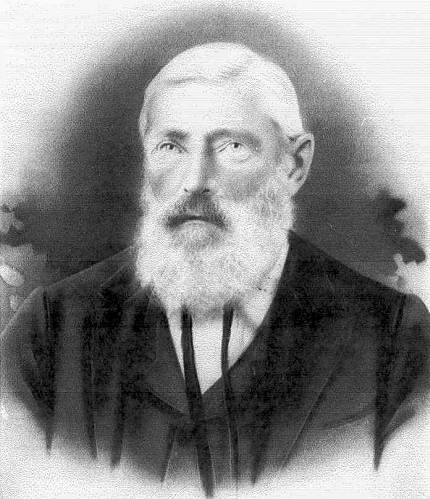
01 Anton Paul Nixdorf
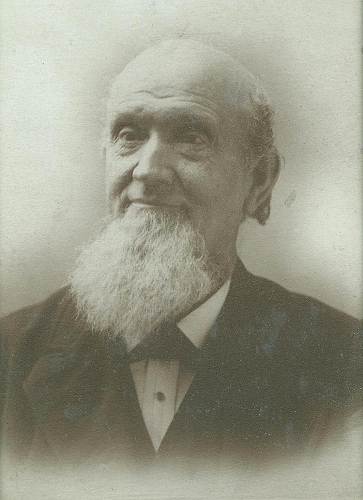
02 Charles Otto Curtman, M.D.
We have had other physicians who were of German descent but I’m not aware of any others who migrated here from Germany to practice medicine. I have written about Dr. Anton Nixdorf at this previous Progress Notes.
Recently, one of Dr. Curtman’s descendents, Paul Farmer of Jefferson City, visited our museum and presented us with new information about Dr. Curtman we hadn’t seen before, especially some old photos of Dr. Curtman. Dr. Curtman was Paul’s great great grandfather (photo 03).
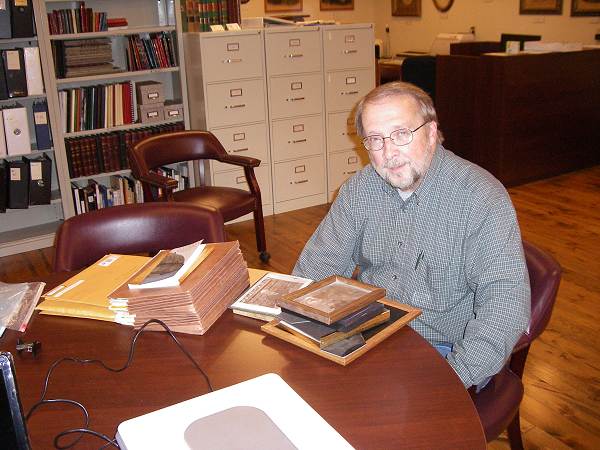
03 Paul Farmer
Paul has spent many years collecting information about Dr. Curtman and along the way has become quite a knowledgeable Miller County historian. The following is the story of Dr. Curtman based on Paul’s extensive knowledge of his ancestor as well as other sources supplied me by Paul:
Dr. Curtman’s full name was Charles Nicholas Cary Phillip Otto Curtman. He was an immigrant from Giessen, Hesse Darmstadt, Germany, a son of William J.G. Curtman and Adelheid Kroenke and was born on July 27, 1829. As a student in Giessen, Curtman had imbibed revolutionary ideas which in 1848 drove many of the best men from German soil. Charles’ father, William, was fearful that his son’s political activities would cost him his life as well as his father’s position at a high level of government. So Charles directed his course to America, not so much for his own safety as for the protection of his father.
Upon arrival in the United States, Charles made his way to New Orleans where he engaged in the drug business, remaining there for about two years. Leaving New Orleans in 1851 he came to St. Louis where he took out his first papers for citizenship in the United States (later completed in Miller County), and shortly afterward for reasons unknown, he followed the Missouri and Osage rivers to a location on the east bank of the Osage River a short distance from St. Elizabeth and across the river from the old river town of Fairplay, now no longer in existence.
Note: This property now is part of the Tappehorn family farm.
Dr. Curtman established a drug and general store. He also had a store house at Fairplay where he received many items from the steamboats which stopped there. Drug stores at that time were different from what they are today; little prescription work was done. Most country doctors carried a supply of medicines in their saddle bags, filling their own prescriptions at the bedside of their patients. Extracts and fluids were made by the doctor and kept in demijohns for ready sale to passing physicians, a john of spiritus frumenti (fancy word for whiskey) never being missing (photo 04).

04 Demijohn
Note: It is not clear at this time whether Dr. Curtman was practicing medicine as well as being a purveyor of pharmaceuticals because in the narrative below he is said to have received his MD degree much later. However, in those days long ago, one could practice medicine without a license in the rural communities and certainly at the least Dr. Curtman was administering pharmaceuticals to his customers.
In 1852 Dr. Curtman met and married Sarah Boyd, sister to Greenville Boyd (photo 05).
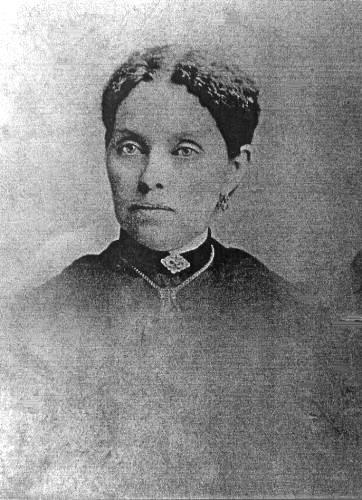
05 Sarah Boyd Curtman
Her first three children did not survive. However, in 1857 her fourth child, George W. Curtman, did survive but unfortunately Sarah died in childbirth leaving her son, George, to be cared for during his infancy by Sarah’s sister in law Jane Freeman Boyd, wife of Greenville Boyd, who only twenty days earlier had given birth to her own baby, named Robert. Fortunately, because Jane was breast feeding her own child she also was willing to share her milk with baby George (photo 06).
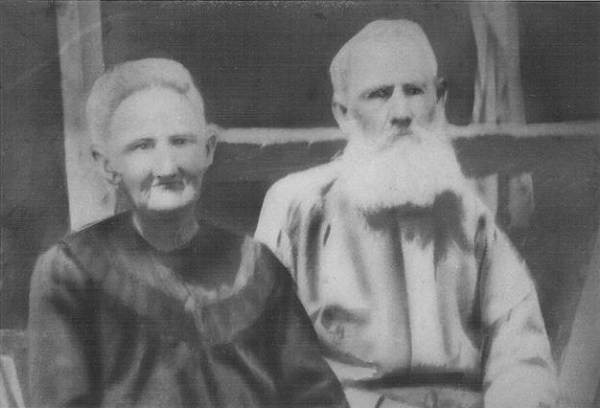
06 Greenville and Jane Boyd
Note: Sarah and Greenville’s parents were James Boyd and Ruth Clark Boyd. Ruth was a sister to John “Hoppin” Clark.
Later, George as an adult also became a physician and practiced in Maries County.
George had four children. One of those, William Frederick, became a Pentecostal minister. Another son, Elmer, was the grandfather of Paul Farmer.
Note: Here is a copy of the Curtman family record supplied me by Paul (photo 07):
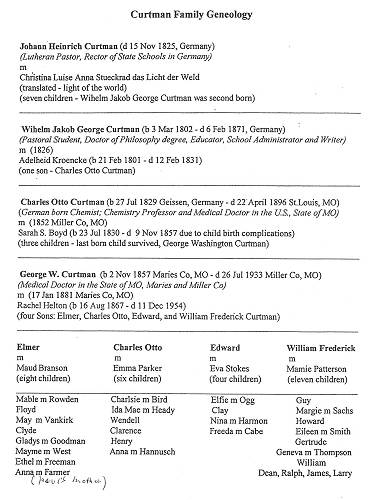
07 Curtman Family Geneaolgy
Click image for larger view
And here is a photo and caption of the Dr. George Curtman family (photo 08):
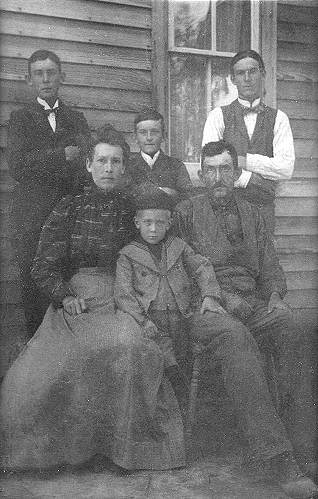
08 Dr. George W. Curtman and Family
Caption: back row: sons Charles Otto, Edward, and Elmer; front row: William Frederick Curtman between Dr.George and Rachel Curtman.
In 1858, Dr. Charles Curtman married a second time to Elizabeth Jane Wilson of origin from Tennessee who had moved to Maries County. She and Dr. Curtman had four children none of which produced offspring after reaching adulthood.
Note: The next part of the story of Dr. Curtman is copied from a speech given at the St. Louis College of Pharmacy November 11, 1914, on the occasion of the posthumous donation of a portrait of Dr. Curtman who had died in 1896 by three of his daughters to the institution in honor of his work there from 1876 to 1889 (photo 09).
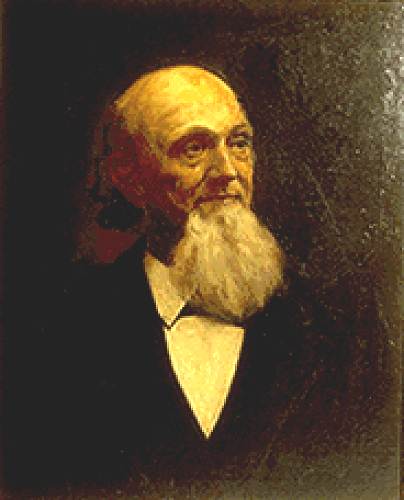
09 Charles Otto Curtman M.D., Professor of Chemistry
Here is the caption for that portrait:
“CHARLES OTTO CURTMAN MD, PROFESSOR OF CHEMISTRY AND DIRECTOR OF THE CHEMICAL LABORATORY OF MISSOURI MEDICAL COLLEGE 1891 TO 1896”
Curiously, the name of the speaker of the following narrative was not recorded; however, it is evident from his story that he was a long time friend and fellow scientist of Dr. Curtman at the institution. The narrative informs us about Dr. Curtman’s life after his second marriage to Ms. Wilson, especially the years he fought in the Civil War. It is unknown if his family remained in Miller County while Dr. Curtman was at war or if it had moved to St. Louis to await his return.
Acceptance Speech
The Curtman Portrait Presentation
C.A. 1914
St. Louis College of Pharmacy
(Speaker not identified)
When the Civil War began, Dr. Curtman joined the mounted Calvary unit of General Sterling Price. This was a rather unusual path to take since most German immigrants fought for the North. Dr. Curtman was never a slave owner. After a short service as army surgeon in a confederate cavalry regiment, his abilities as a chemist were recognized and he was entrusted by General Price with the establishment of laboratories in Arkadelphia, Arkansas, and at Tyler and Marshall, Texas. There, he installed the manufacture of medicines for use in the army hospitals, and the manufacture of fulminates for percussion caps. So extended was the production of fulminates that a distillery was necessary in their manufacture. When the supply of saltpeter for gun powder ran short, Dr. Curtman directed the prospecting for nitre caves, which frequently were found in the Southwestern States, and produced nitrate potash from the nitrates obtained from these pocket mines. When sources of supply for drugs were cut off by the North, his knowledge of indigenous drug plants in Texas enabled him to point out and gather plants which could be used as substitutes in compounding medicines. In this way, he materially helped the cause of the Confederacy, always hopeful for its final success and sadly discouraged when the downfall of the South had become inevitable. Having given his best and all for the country of his adoption, at the end of the war he found himself bare of all means of subsistence, but he was not broken in mind and ready to start anew. So he went to St. Louis, where he was invited to cooperate in the reorganization of the Missouri Medical College. Having thus secured a paying proposition, he drew his family to St. Louis, securing a home for them in North St. Louis, near Bremen Avenue. In this neighborhood, he lived for thirty years, up to his end.
During all these years he remained connected with the Missouri Medical College, as teacher of chemistry. But so strong was his desire to add to his already wide knowledge that he took a systematic course in medicine, receiving his degree of M.D. in proper course of time, whereupon he established a practice in North St. Louis, becoming a much valued friend and physician to many families. Desirous of doing useful work in spare hours, he most thoroughly studied microscopy and possessed some of the best instruments ever brought to the United States. In addition to this he kept up with the progress of chemical science and mastered the new theories and systems of chemistry to perfection. This fitted him so exceedingly well for the scientific work in chemistry which Professor Simon has fully recorded. It would seem that a man, whose time was already so much occupied, would not be desirous of additional work. But so great was his desire to serve his profession that he did not hesitate to undertake the onerous task of teaching chemistry in the St. Louis College of Pharmacy, when he was asked to introduce laboratory work in chemical instruction, chemistry having so far been taught only in the lecture room. Dr. Curtman has through eleven years, 1878-1889, conducted the chemical laboratory in this institution and I may well add that a great part of the splendid and wide spread reputation which is enjoyed by this colleague has come to it by the method of teaching chemistry which Dr. Curtman has introduced. During the greater part of these eleven years, which may well be considered the years of Dr. Curtman’s most important work, it was my great privilege to be one of his intimate friends. Many evenings and Sundays found us together, either in his laboratory on the third floor or in the roof garden of his residence, discussing chemical problems, or else occasionally in the basement, sampling wines and cheese. Frequently, I was his guest at the supper table, enjoying with him the pleasures of a most happy family life. In his house, I met many of his former students and associates, particularly many members of the Verein Deutscher Aerzte, which organization was founded during this period of time. Most of his books and essays, I had the privilege of reading before they went into print. They are models of clearness, proving absolute mastery of the subjects treated in them. But more than all, I admired Dr Curtman’s work in connection with the U.S. Pharmacopoeia. Many a time, we took long walks, discussing subjects of common interest, and always Dr. Curtman proved to be well informed and his judgment was clear and correct. But the delightful part in his intercourse with others was his receptivity for the work of others in various lines, as well as his cheerful nature which manifested itself in the appreciation of good jokes, even of a practical nature, thus endearing himself particularly to his students who highly appreciated that he could enter into their spirit.
Dr. Curtman devoted some of the best years of his useful life to the interest of this college, and what he did will be remembered and appreciated in many coming years. In accepting his portrait, I express to the donors our profound gratitude for the gift and make the assurance that it will always have a prominent place in the gallery of honored teachers of the St. Louis College of Pharmacy.
Note: In later years the College of Pharmacy became part of Washington University. Dr. Curtman passed away in 1896 and was buried in the Bell Foundation Cemetery.
Among the accomplishments of Dr. Curtman, one was certainly important to the St. Louis Medical community. According to this quote from an old manuscript of the history of St. Louis Dr. Curtman was the physician who introduced the technique of diagnostic x-ray to St. Louis (photo 10):
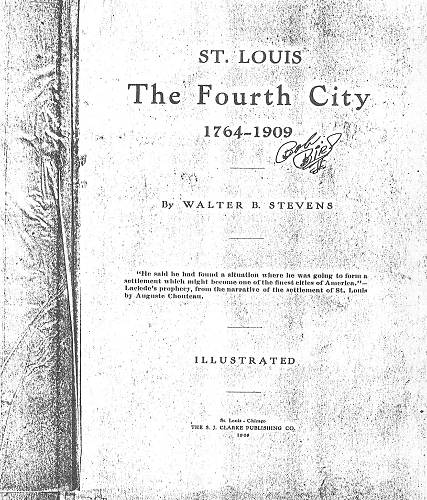
10 St. Louis The Fourth City
St. Louis The Fourth City
P. 209
“At a meeting of the Alumni Association of the Missouri Medical college, Professor C.O. Curtman in 1895 introduced the X-ray discovery to the medical profession of St. Louis.”
Here is a photo of Dr. Curtman in his office at the College of Pharmacy (photo 11):
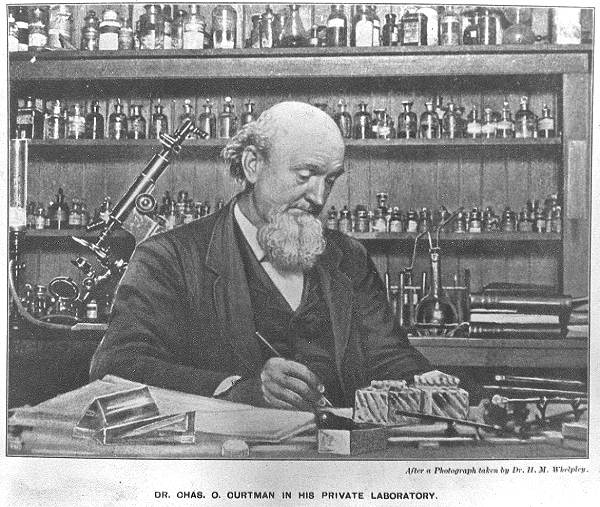
11 Charles Otto Curtman M.D. - College of Pharmacy, St. Louis
While Dr. Charles Curtman practiced just a few years in Miller County, his son Dr. George Curtman stayed in the area establishing a medical practice in Maries County.
The Curtman name, however, is a permanent fixture in Miller County history since it was long ago given to the large island in the Osage River west of St. Elizabeth. It isn't known for sure if Dr. Curtman used the island for storage for his two stores on each side of the river or if he used it for farming. But nowadays the island is better known not because of Dr. Curtman but because it was the site of a brutal massacre of Miller County soldiers who were fighting for the North by the bushwhacker, Crabtree and his recruits. As noted above the island is located to the west of St. Elizabeth; in this copy of an old plat map you can recognize it as the island in which the map has placed the word “Osage” (photo 12).
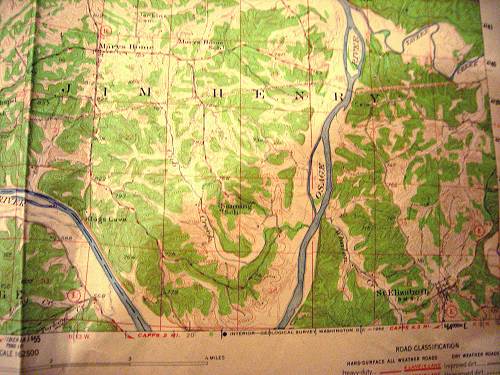
12 Curtman Island
Click image for larger view
The story of the massacre is found on our website as well told by our Historical Society historian, Peggy Hake. I had placed Peggy’s narrative about the massacre as well as the activities in the area of Crabtree on a previous Progress Notes.
If you are unfamiliar with the story you need to take the time to read it as it is one of the major Civil War tragedies of our county’s history.
Some readers may be interested in reading more about the long ago abandoned town of Fairplay where Dr. Curtman had a warehouse. Once again, we are thankful that Peggy Hake has written a very complete history of the town and Dr. Curtman’s time there at this place on our website.
As a final note I found it interesting to learn from Paul Farmer that a current state legislator is a descendent of Dr. Charles Curtman. His name is Paul Curtman of Pacific, Missouri, a Republican representative of District 105 (photo 13).
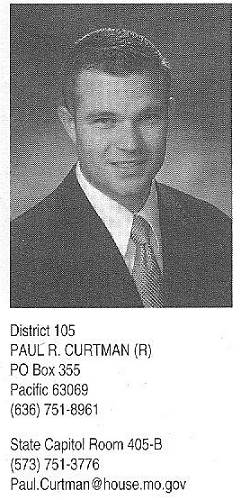
13 Rep. Paul Curtman - District 105
Paul is a 3rd great grandson of Dr. Curtman, according to Paul Farmer. Representative Curtman has written a new book, Paul said, titled “Don’t Tread on Me!” (photo 14).
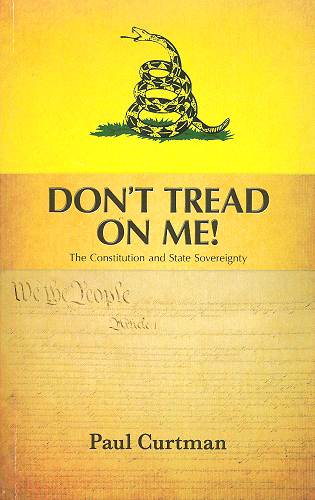
14 Book written by Paul Curtman, 3rd Great Grandson of Charles Otto Curtman M.D.
I haven’t read it but I thought it interesting to know about Representative Curtman.
I was a little late this season to take pictures of the fall foliage colors so some of the original brilliance of the colors was dissipated in these two photos copied here (photos 15 and 16).

15 Fall
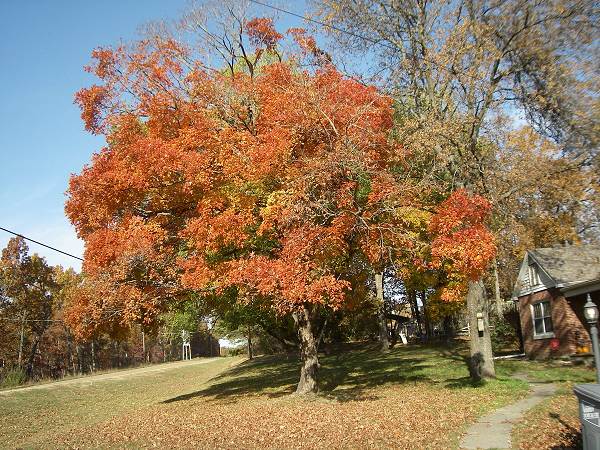
16 Fall
They were taken from the area where the Miller County historical sign is located on Highway 52 coming into Tuscumbia from the north.
That’s all for this week.
 Joe Pryor
Previous article links are in a dropdown menu at the top of all of the pages.
|

